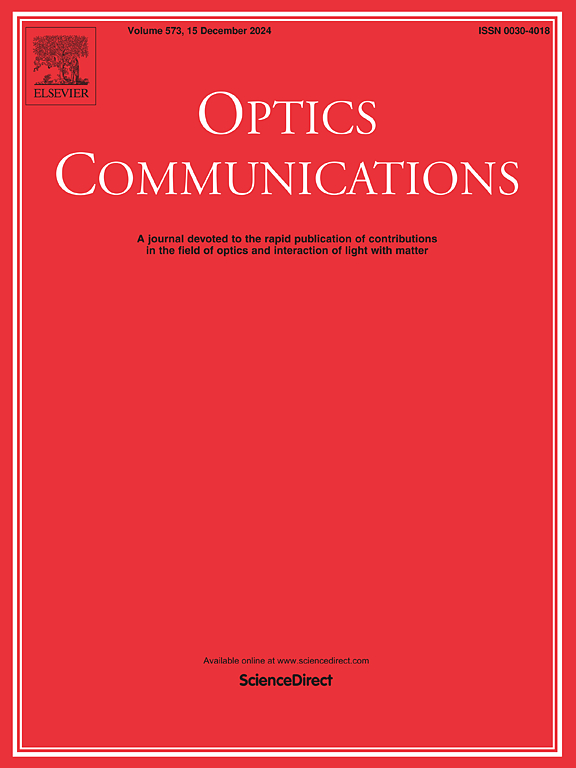Ultra-broadband multi-character logic gates integrated by inverse designed logic units
IF 2.2
3区 物理与天体物理
Q2 OPTICS
引用次数: 0
Abstract
We propose a method to design multi-character logic gates, where the method of moving asymptotes (MMA) is used to design logic device unit structures, and then multi-character logic gates are constructed by integrating these basic logic units. With this approach, we successfully designed three-character AND and OR gates with dimensions of 2 μm × 3 μm, as well as four-character AND and OR gates with dimensions of 2 μm × 4 μm. The results show that the maximal contrast ratio of the three-character AND gate is 19.411 at wavelengths from 950 nm to 1600 nm, and the three-character OR gate achieves a maximal contrast ratio of 12.551 at wavelengths from 1200 nm to 1600 nm. For the four-character AND gate, the maximal contrast ratio is 9.269 at wavelengths from 950 nm to 1550 nm, while the four-character OR gate reaches a maximal contrast ratio of 17.754 at wavelengths from 1000 nm to 1600 nm. Compared to traditional binary logic gates, our multi-character logic gates achieve logical states directly without needing control ports, reducing design complexity and enhancing performance. These innovative logic gates have broad application prospects in future digital system designs.
求助全文
约1分钟内获得全文
求助全文
来源期刊

Optics Communications
物理-光学
CiteScore
5.10
自引率
8.30%
发文量
681
审稿时长
38 days
期刊介绍:
Optics Communications invites original and timely contributions containing new results in various fields of optics and photonics. The journal considers theoretical and experimental research in areas ranging from the fundamental properties of light to technological applications. Topics covered include classical and quantum optics, optical physics and light-matter interactions, lasers, imaging, guided-wave optics and optical information processing. Manuscripts should offer clear evidence of novelty and significance. Papers concentrating on mathematical and computational issues, with limited connection to optics, are not suitable for publication in the Journal. Similarly, small technical advances, or papers concerned only with engineering applications or issues of materials science fall outside the journal scope.
 求助内容:
求助内容: 应助结果提醒方式:
应助结果提醒方式:


